Kayaking on weirs - play spots or deathtraps?
Weirs are dangerous for lots of reasons. In this article, you'll see some of the common hazards associated with weirs.
Weirs are a common site on rivers around the UK (and World) and provide a barrier across the river.
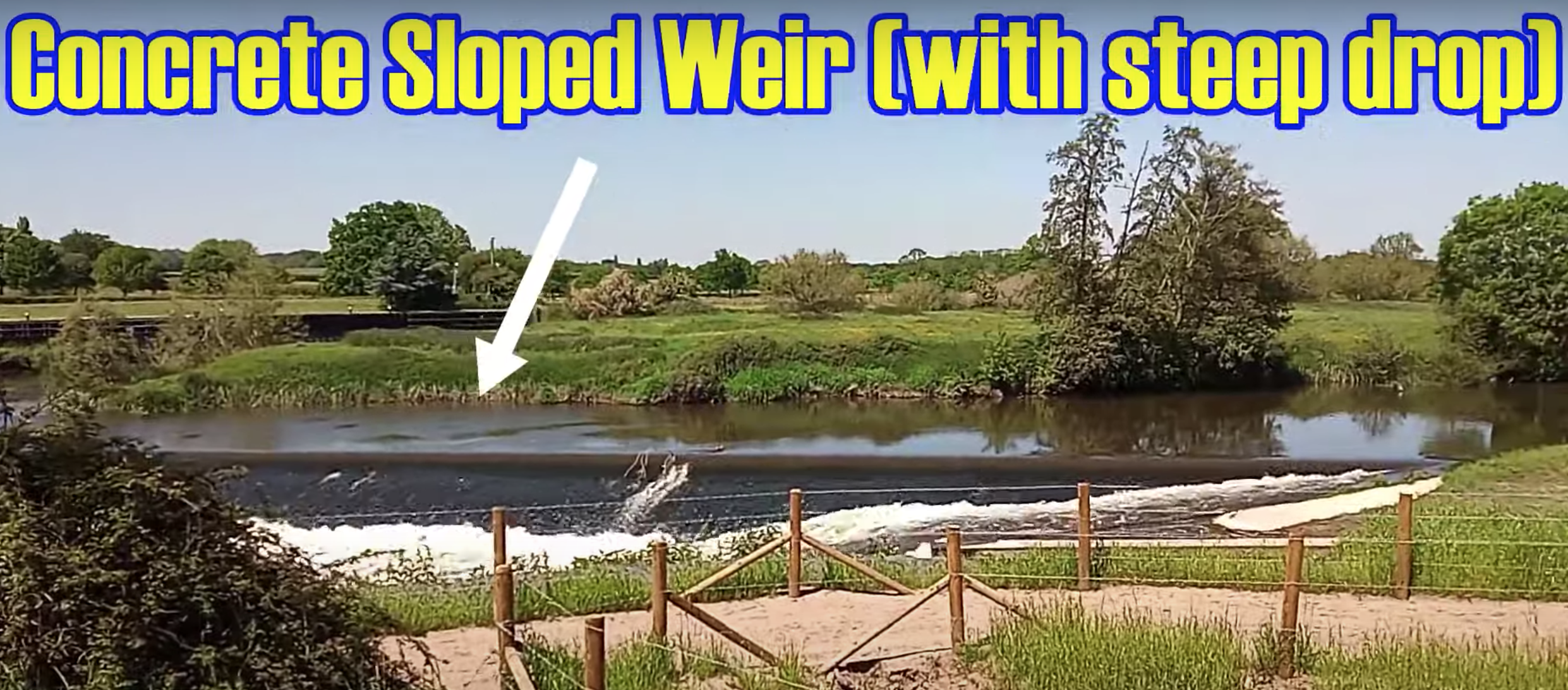 Sloped weir on the River Severn near Bevere
Sloped weir on the River Severn near BevereThis barrier usually allows a change of river level to take place. These changes in river level can be few inches to several feet and the weirs can vary in type from concrete structures to loose stone as seen here.
In the last few years, some weirs have undergone development to allow them to assist the local fish population. This one is on the River Severn near Worcester and allows fish to easily swim back upstream to spawn.
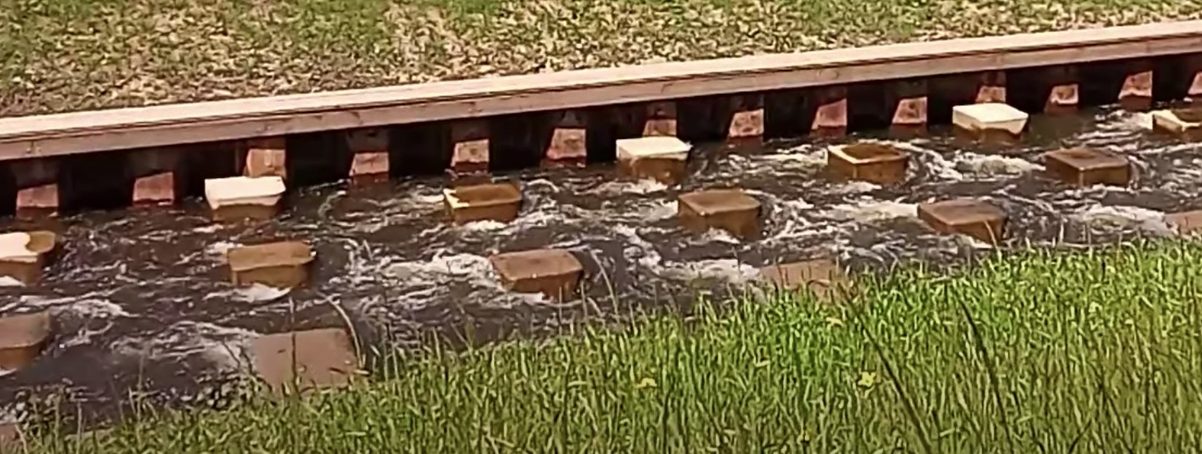 Fish pass on the River Severn
Fish pass on the River SevernFrom a kayaking point of view, weirs can be great places to learn and practice your white water skills. For some weir types, they can produce very rapid flows of water through narrow channels which makes for an interesting time.
They can also produce small waves and stoppers which are good fun in kayaks.
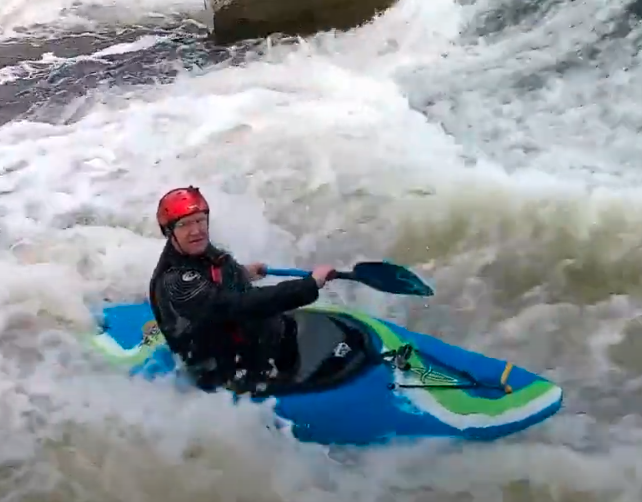 Kayaking on a sloped weir
Kayaking on a sloped weirDanger 1 - Powerful water
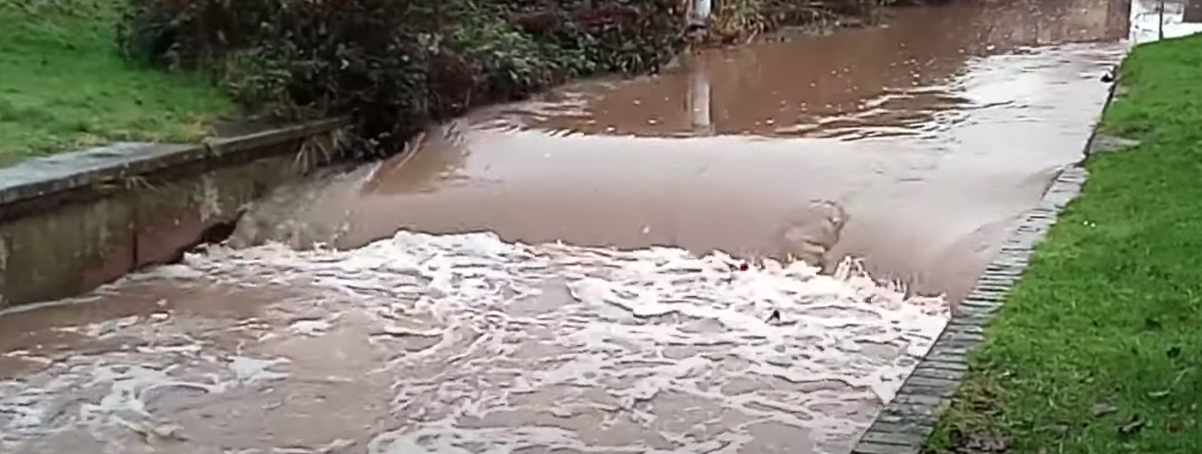
Water going over any kind of drop will accelerate and contain more power. You can see it above. Couple this with a narrowing of the river channel and this speeds up the water even more.
Paddling in strong white water like this requires more energy and more control of your kayak. Any capsize and swim will make rescue more difficult and any swimming downstream will be faster.
Danger 2 - Boils
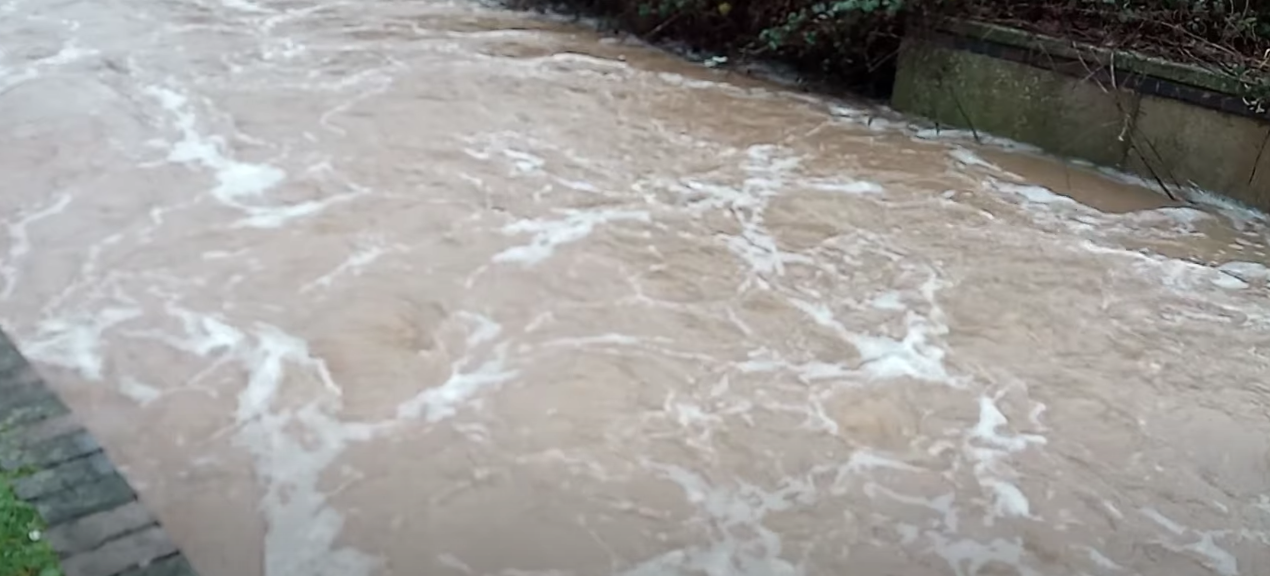 Water flow showing some strong boils
Water flow showing some strong boilsWith the extra power comes irregular movement of the water. This creates boils as the water pushes against itself and forces eruptions (or boils) on the surface of the water.
You can see them above. These boils can change the direction of the kayak and even tip it over.
Danger 3 - Stoppers
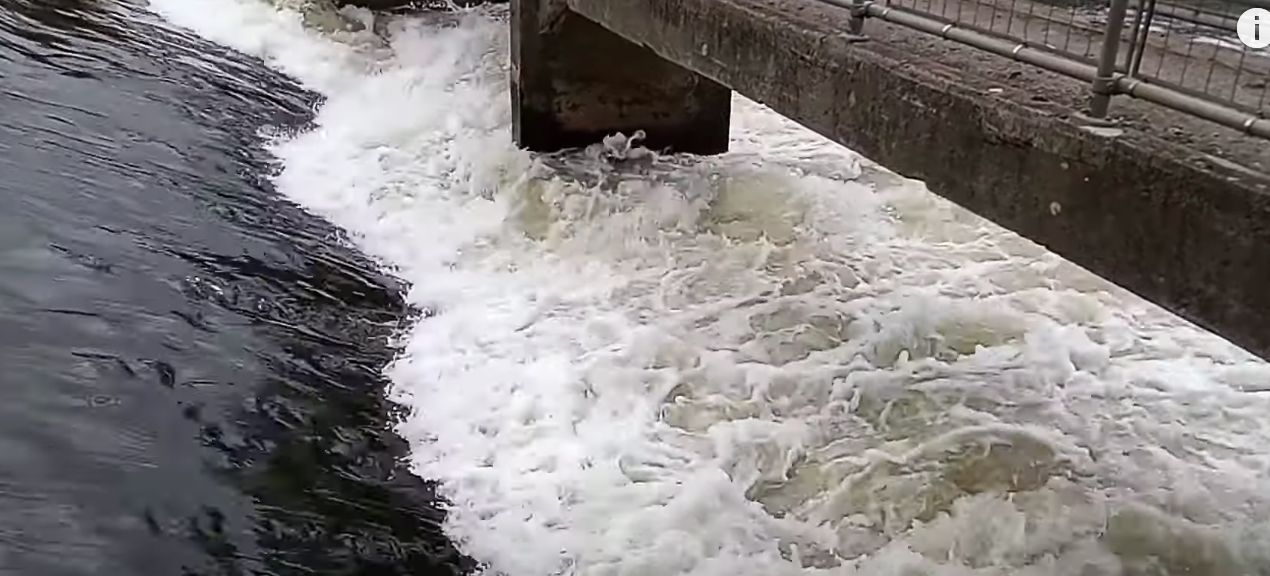 A holding stopper on the River Avon near Eckington
A holding stopper on the River Avon near EckingtonThe change of water level - especially over a drop - will create a stopper. This is when the water turns back on itself and causes a holding wave called a stopper.
A stopper like this on a weir that is in flood has a large potential to hold the kayak and make escape very difficult. Couple this with the often shallower depth of the water and the suction effect on the hull of the kayak makes it impossible to leave the stopper.
As a clue to the strength of the stopper, you may see river debris floating in the stopper and re-circulating around. Debris can be dragged back into the stopper and pushed down under the water.
Danger 4 - Hydraulic Towback
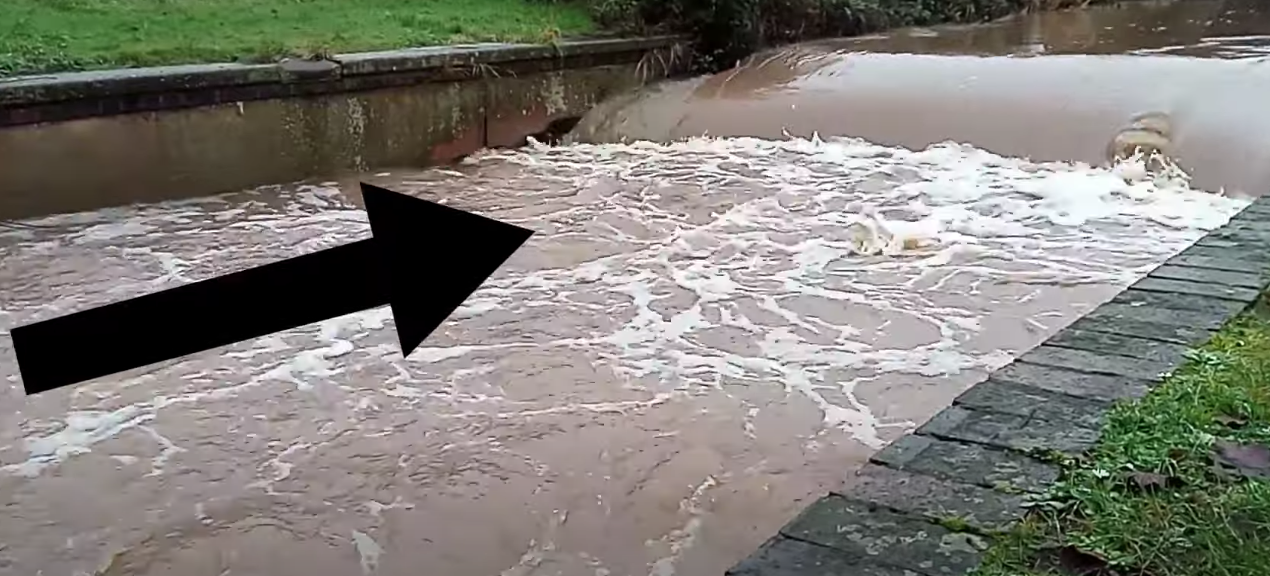 Arrow shows the direction of the towback
Arrow shows the direction of the towbackOn some weirs, the power of the water and the type of weir creates a hydraulic tow back. This is a flow of water that is flowing upstream and back into the stopper. You can clearly see the flow and debris will exit the stopper and flow back into it because of the tow back.
Enhancing the tow back is the change in river level just after the weir drop. In high water this produces a clear 'uphill' slope on the water and makes it extremely difficult to paddle over. You can see it here.
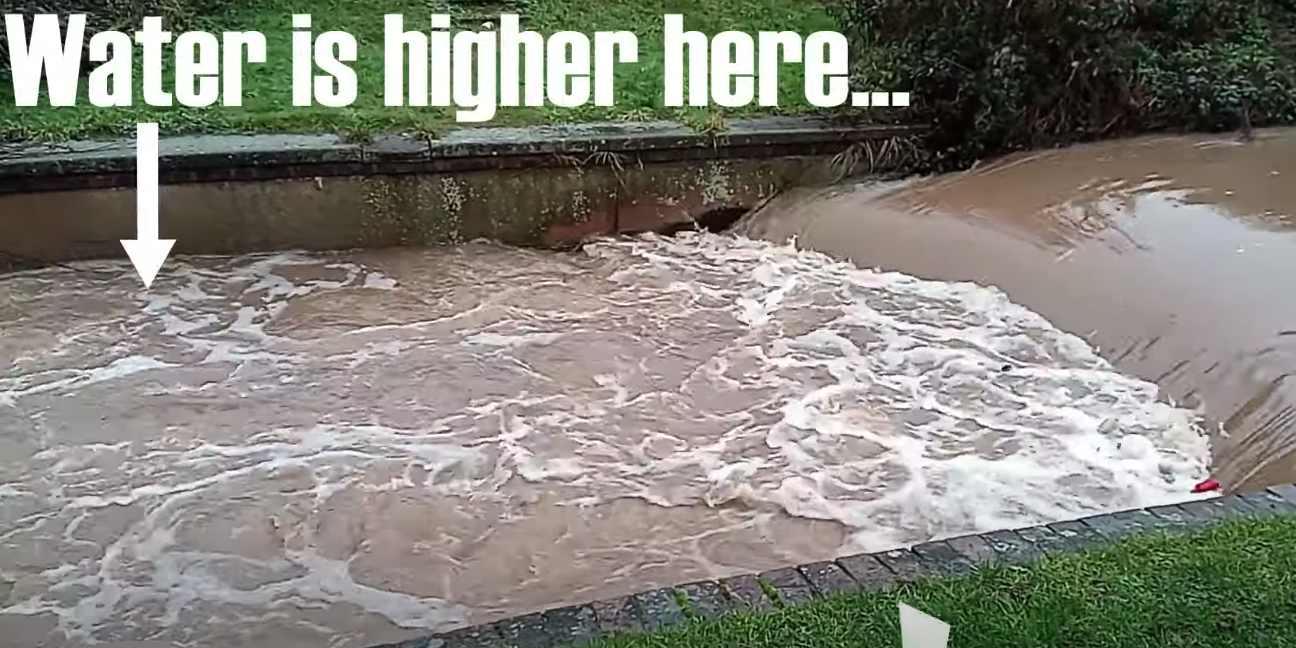
Hydraulic tow back is one of the most dangerous aspects of a weir. Even when swimming, this hydraulic tow back will be difficult and sometimes impossible to swim past. This means you will be repeatedly forced into the stopper and circulate back round through the tow back.
Danger 5 - Debris
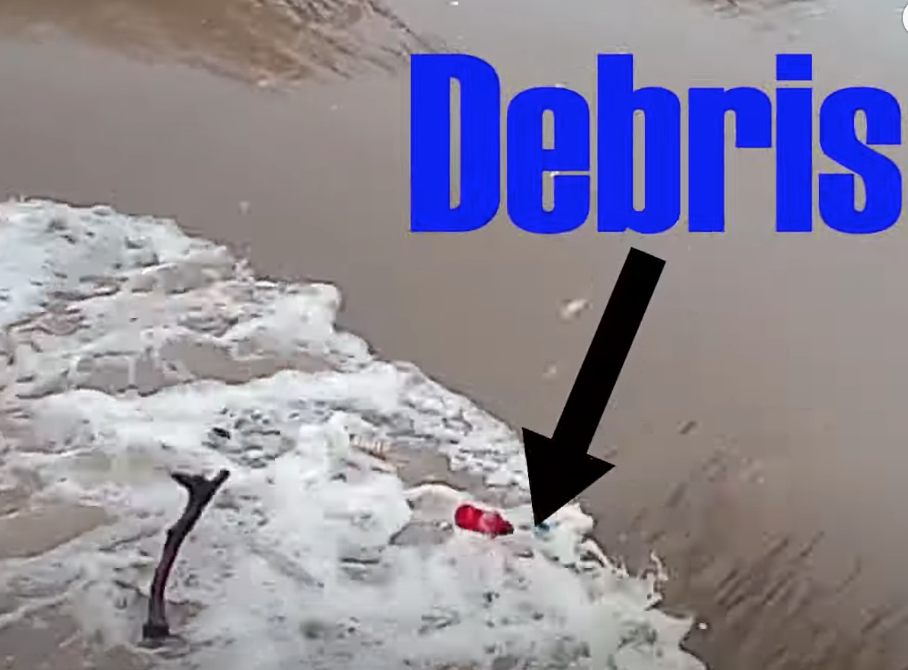
Debris that has been collected by the high water levels and dragged down the river can accumulate at the bottom of weirs - in the eddies or in the stoppers.
Large branches, wire and other items could entangle and capsize you.
Danger 6 - Steps & rocks
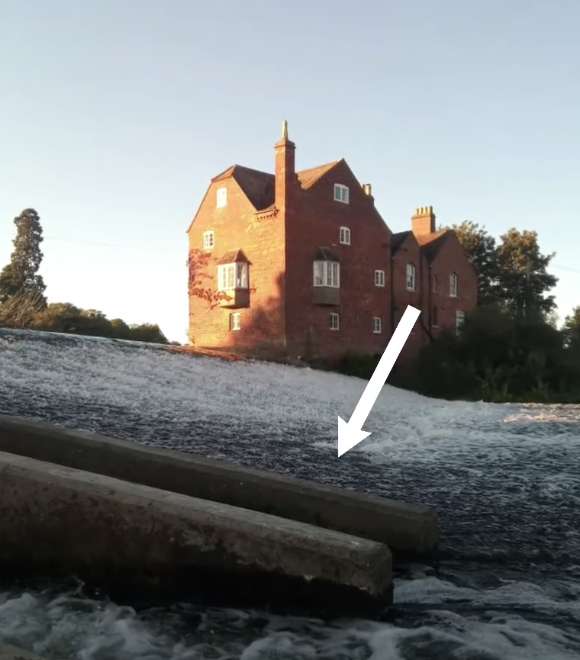
Many weirs are manmade and contain a variety of purpose placed blocks and loose rocks. These blocks and rocks are solid and colliding into them - in the flesh or with your kayak can hurt you or break your kayak. Being knocked unconscious (even with a helmet on) is life threatening.
In high water, the risk of pinning against these blocks and rocks increases.
Danger 7 - Ironwork
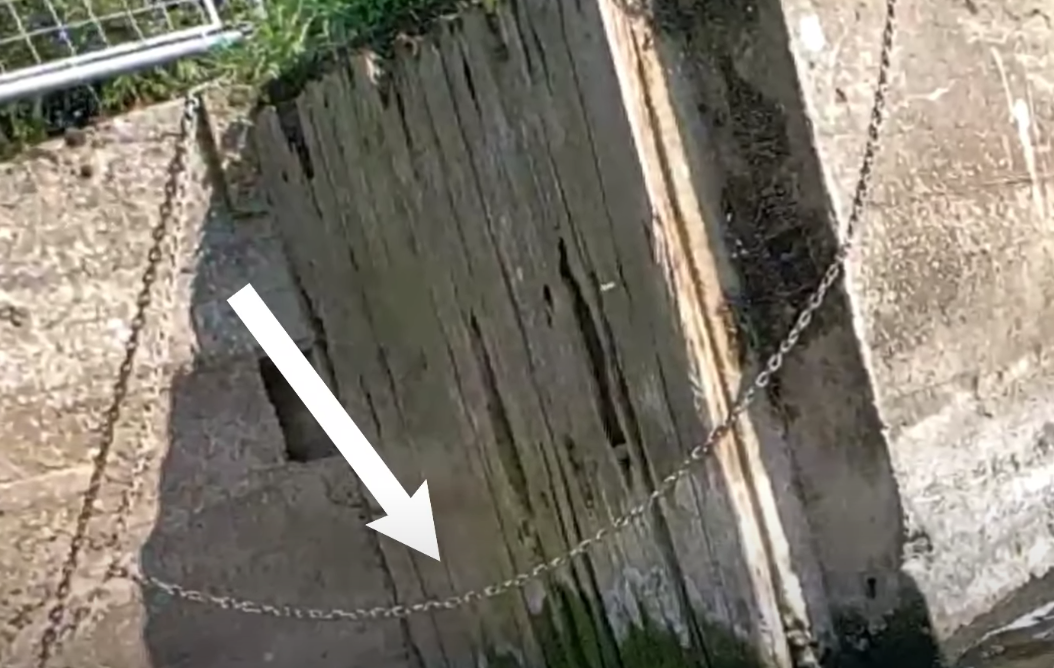
On some weirs, there are lengths of iron work sticking out the blocks and rocks. Perhaps these were used to keep the weir held together, but over time have been exposed and create pin and snag hazards.
You can see some chain in the photo above.
Some of these ironworks will be under the water which makes them even more dangerous as you cannot see them.
Danger 8 - Raised banks
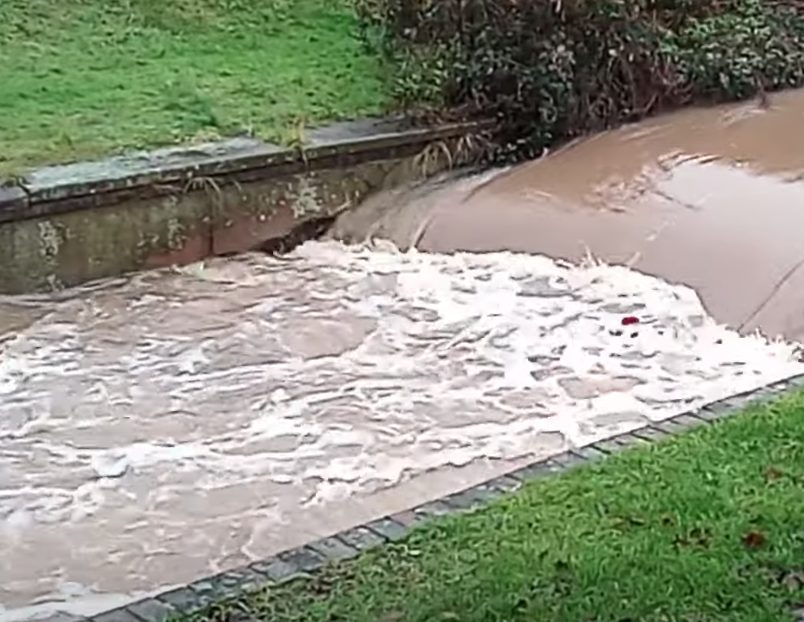
As most weirs are manmade, they are often not made for easy access at the top or bottom of the weir. Any capsize will make rescue more difficult and self-rescue sometimes impossible due to the height of the banks.
So there you have 8 dangers that can be found on weirs. Please do take note of these and increase your safety awareness when kayaking or canoeing on or around weirs.
To view the full video 'Kayaking on weirs - Playspots or deathtraps? Here's 8 dangers found on weirs' - see the YouTube link below:

Dave is very happy to suggest products that will
help you in your paddling adventures.
These products cover kayaking, canoeing and
stand up paddle boarding.
Dave knows these products, has used them and can confidently
recommend them and they are from reputable suppliers too.
Some of the links are affiliate links - this does not affect the price you pay,
but does generate a small income to support this website.
Thank you for helping us!
Click to see Dave's suggested kayaking & canoeing products!
PS. Paddlesports can be dangerous.
Read our safety disclaimer - here

New paddling inspiration, tip, trip or technique video EVERY week! Watch Ed, Dave and Moo on their kayaking, canoe and SUP adventures. It's all about having fun on the water. 169,000+ views, 100+ videos & 700+ subscribers so far! Click below to start watching:
Ed & Dave Kayaking Youtube Channel
WANT TO HELP US?
We really value your visit to us today. We run this website and our Youtube channel to provide paddling inspiration, tips, trip and technique content to you. We love being out on the water! If you enjoyed your visit, you can support us by using the links below:
Buy us something on our wish list
Thank you
NEED WEB HOSTING?
We recommend IONOS. Great service, technical support and stable hosting. Click the link below to find out more:
IONOS Web Hosting - RECOMMENDED!


